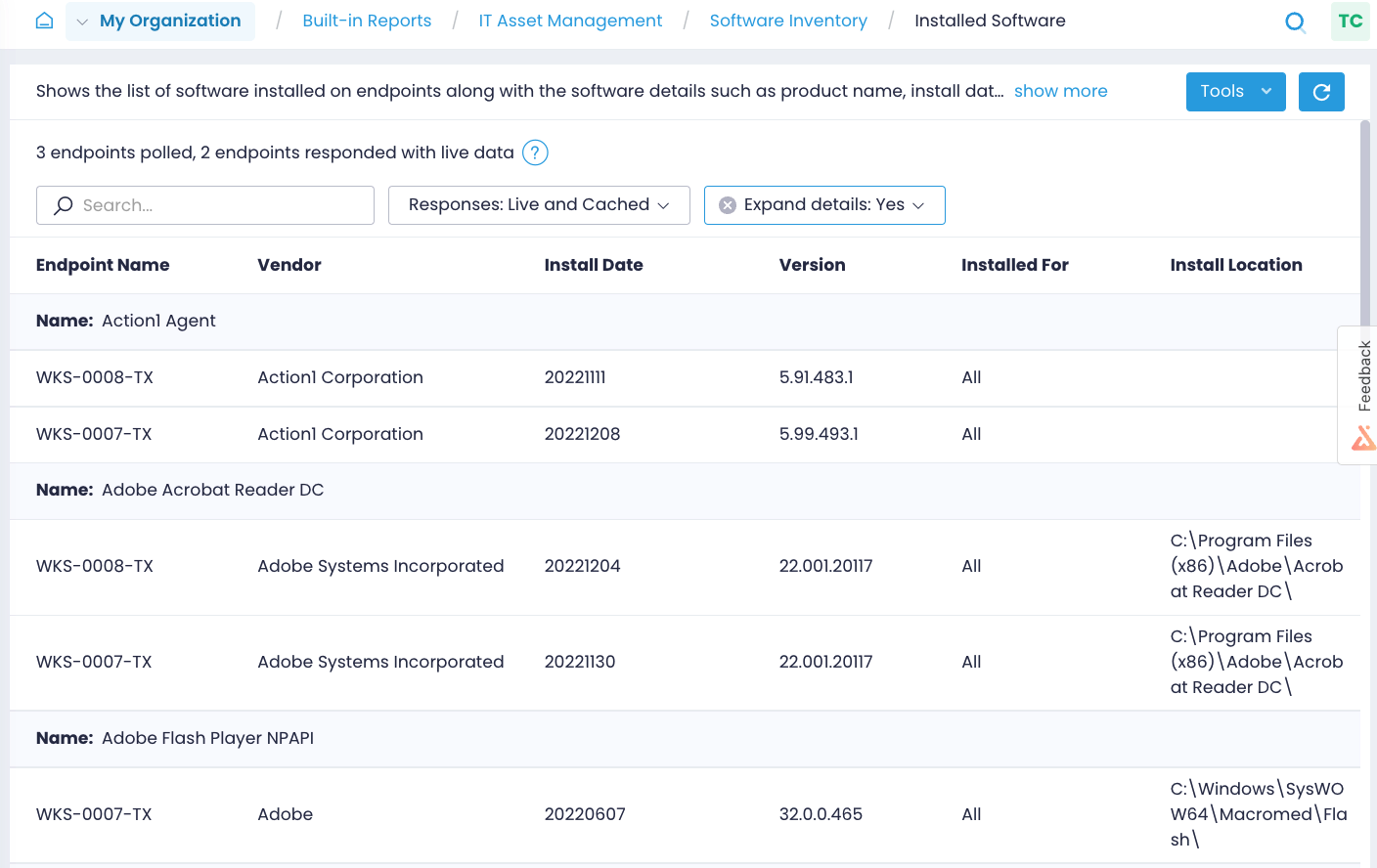Browsing Reports
During this operation, you are navigating through report definitions (including report names and descriptions), without obtaining any endpoint data.
- Since report definitions are maintained at the Enterprise level, users can browse all built-in and custom report definitions, even from the Action1 Organizations not included in their current scope.
- However, to populate the report definition with endpoint data, users will require the View Reports permission.
To browse built-in or custom reports:
- Go to Real-Time Reports & Alerts.
- Select Built-in Reports or Custom Reports.
- Navigate to the desired category in the tree on the left. Then you can see the report names and descriptions listed on the right.
NOTE: Custom reports do not have any sub-categories; they are all shown under Custom Reports.
Tip: To look for the reports you are interested in (without a need to open them), you can click on the search (“magnifying glass”) icon in the top-right corner of the Action1 console and enter the search keywords.
Generating a Report Populated with Data
During this operation, the report structure is populated with data obtained from the managed endpoints. For that, you should have at least the View Reports permission.
- Navigate to the report you need and click on its name.
- Action1 can populate the reports with both live and cached data. Select the required option from the Responses drop-down list, then click Refresh next to the Tools menu button.
See also: Data Collected with Action1 Agent. - For the reports with Summary type, you can also select whether to Expand details.

